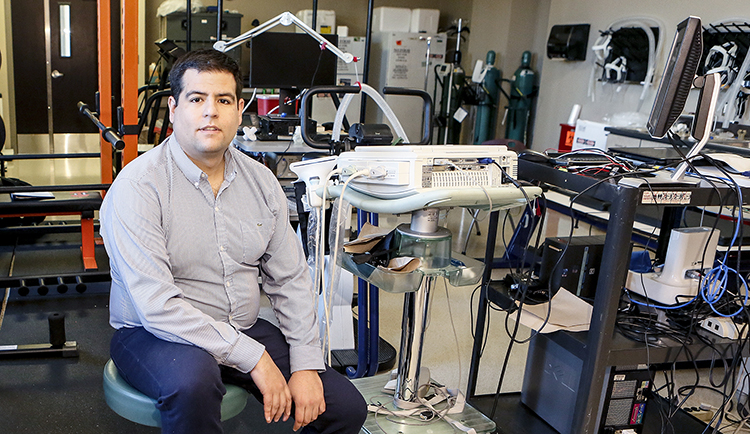UTEP Ph.D. Student Earns Stanford University Honor, Research Published in Prestigious International Journals
Last Updated on January 22, 2019 at 12:00 AM
Originally published January 22, 2019
By UC Staff
UTEP Communications
UTEP doctoral student Francisco Morales-Acuña, M.D., was selected to participate in Stanford University’s PRISM (Postdoctoral Recruitment Initiative in the Science and Medicine) program in February 2019.

Stanford PRISM enables late-stage graduate students from diverse backgrounds who are planning their postdoctoral training the opportunity to see first-hand if a postdoctoral position at Stanford University would be a good match for them.
Morales-Acuña, a Ph.D. candidate in UTEP’s Interdisciplinary Health Sciences (IHS) program, will leave on an expenses-paid trip to Stanford University Feb. 20-23. He will tour the campus, meet with current Stanford postdocs, discuss shared research interests with faculty, and learn about postdoctoral training at the university.
A native of Santiago, Chile, Morales-Acuña earned a Doctor of Medicine degree from Andrés Bello National University in Chile in 2009. He started the IHS program in 2017 and is a research assistant in UTEP’s Doctor of Physical Therapy (DPT) program. He manages the Clinical Applied Physiology (CAPh) Lab headed by DPT Director Alvaro Gurovich, Ph.D.
Morales-Acuña’s research interests include sports medicine, cardiology and physiology.
His research on the “Comparison between Cuff-Based and Radial Tonometry Exercise-Induced Central Blood Pressure,” will be published in the European Journal of Applied Physiology in February. Rather than using radial tonometry to monitor a patient’s central blood pressure (BP), Morales-Acuña’s study found that BP could be measured more precisely with an automatic cuff-based blood pressure device during low-intensity exercise.
Morales-Acuña also is the second author on a paper titled, “Bicuspid Aortic Valve in Elite Athletes" in February’s issue of the European Heart Journal-Cardiovascular Imaging. Led by Araceli Boraita, M.D., Ph.D., from the Spanish Agency for Health Protection in Sport (AEPSAD) in Madrid, Spain, the study also involved researchers from AEPSAD, and the Hospital Universitario Infanta Cristina de Badajoz and the Hospital Clínico San Carlos in Spain.
The purpose of the study was to determine the prevalence and characteristics of bicuspid aortic valve (BAV), a congenital heart disease, among elite athletes and to analyze the effect of long-term exercise training on their aortas.
Researchers found that high-intensity exercise training and competition did not affect the aorta of elite athletes with BAV in comparison to sedentary patients with BAV.
According to Morales-Acuña, this is the first study to determine that elite athletes with BAV may engage in high dynamic cardiovascular exercise without adverse consequences. The study recommends that athletes with BAV maintain a yearly echocardiographic follow-up.